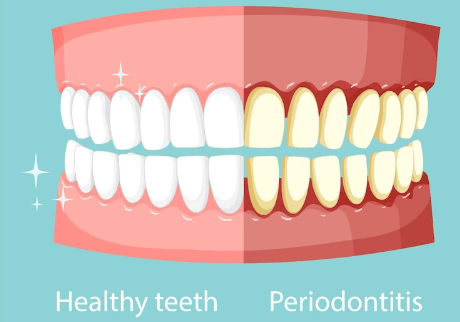Gingivitis vs. Periodontitis: What Is The Difference?
“Gingivitis vs. Periodontitis: Understanding the Signs and Symptoms”
Gingivitis and periodontitis are two common dental conditions that affect millions of people worldwide. While they may sound similar, they are two different conditions that affect different parts of the mouth. Understanding the difference between gingivitis and periodontitis is important for proper diagnosis and treatment. In this blog, we will explore the signs and symptoms of these conditions and how they differ.
Gingivitis
Gingivitis is a mild form of gum disease that affects the gums, the soft tissues that surround and support the teeth. It is caused by plaque buildup, a sticky film of bacteria that forms on teeth and gums. The bacteria in plaque produce toxins that irritate the gums, leading to inflammation and swelling.
The signs and symptoms of gingivitis include:
- Red, swollen, or tender gums
- Bleeding gums, especially during brushing or flossing
- Bad breath or a bad taste in the mouth
- Receding gums or longer-looking teeth
Gingivitis is a reversible condition that can be treated and prevented with good oral hygiene habits, such as brushing twice a day, flossing daily, and getting regular dental cleanings. If left untreated, however, gingivitis can progress to a more serious form of gum disease called periodontitis.
Periodontitis
Periodontitis is a more advanced form of gum disease that affects the bone and other tissues that support the teeth. It is caused by long-term exposure to plaque, which can lead to the formation of pockets between the teeth and gums. These pockets become infected with bacteria, which can cause further damage to the gums and bone.
The signs and symptoms of periodontitis include:
- Persistent bad breath or a bad taste in the mouth
- Receding gums or longer-looking teeth
- Loose or shifting teeth
- Pus between the teeth and gums
- Changes in bite or difficulty chewing
- Pain or sensitivity in the teeth
Periodontitis is a serious condition that can lead to tooth loss if left untreated. Treatment may include scaling and root planing, a deep cleaning procedure that removes plaque and tartar from below the gum line, as well as antibiotics and other medications. In some cases, surgery may be necessary to repair damage to the gums and bone.
Key Differences
While gingivitis and periodontitis are both forms of gum disease, there are several key differences between them. Here are some of the main differences to keep in mind:
Location:
- Gingivitis affects the gums, while periodontitis affects the bone and other tissues that support the teeth.
Reversibility:
- Gingivitis is reversible with proper treatment and oral hygiene habits, while periodontitis is a more advanced condition that may require more extensive treatment.
Symptoms:
- The symptoms of gingivitis are generally mild and may include red, swollen gums, and bleeding. In contrast, periodontitis symptoms are more severe and may include tooth loss, pus between the teeth and gums, and changes in the bite or difficulty chewing.
Damage:
- Gingivitis can cause damage to the gums, while periodontitis can cause damage to the gums and bones that support the teeth.
Prevention and Treatment
Preventing gum disease is essential for maintaining good oral health. Here are some tips for preventing gingivitis and periodontitis:
- Brush your teeth twice a day with fluoride toothpaste
- Floss daily to remove plaque and food particles from between your teeth
- Use an antiseptic mouthwash to kill bacteria and freshen your breath
- Eat a healthy diet that is low in sugar and high in nutrients
- Avoid smoking and using tobacco products
It’s important to note that the best way to treat gum disease is to prevent it from occurring in the first place. Practicing good oral hygiene habits and seeing your dentist regularly can help prevent gingivitis and periodontitis.
In conclusion, gingivitis and periodontitis are conditions that affect different parts of the mouth. Gingivitis is a mild form of gum disease that affects the gums, while periodontitis is a more advanced form of gum disease that affects the bone and other tissues that support the teeth. Understanding the signs and symptoms of these conditions is important for proper diagnosis and treatment. Practicing good oral hygiene habits and seeing your dentist regularly can help prevent gingivitis and periodontitis and maintain good oral health for years.





 |
|